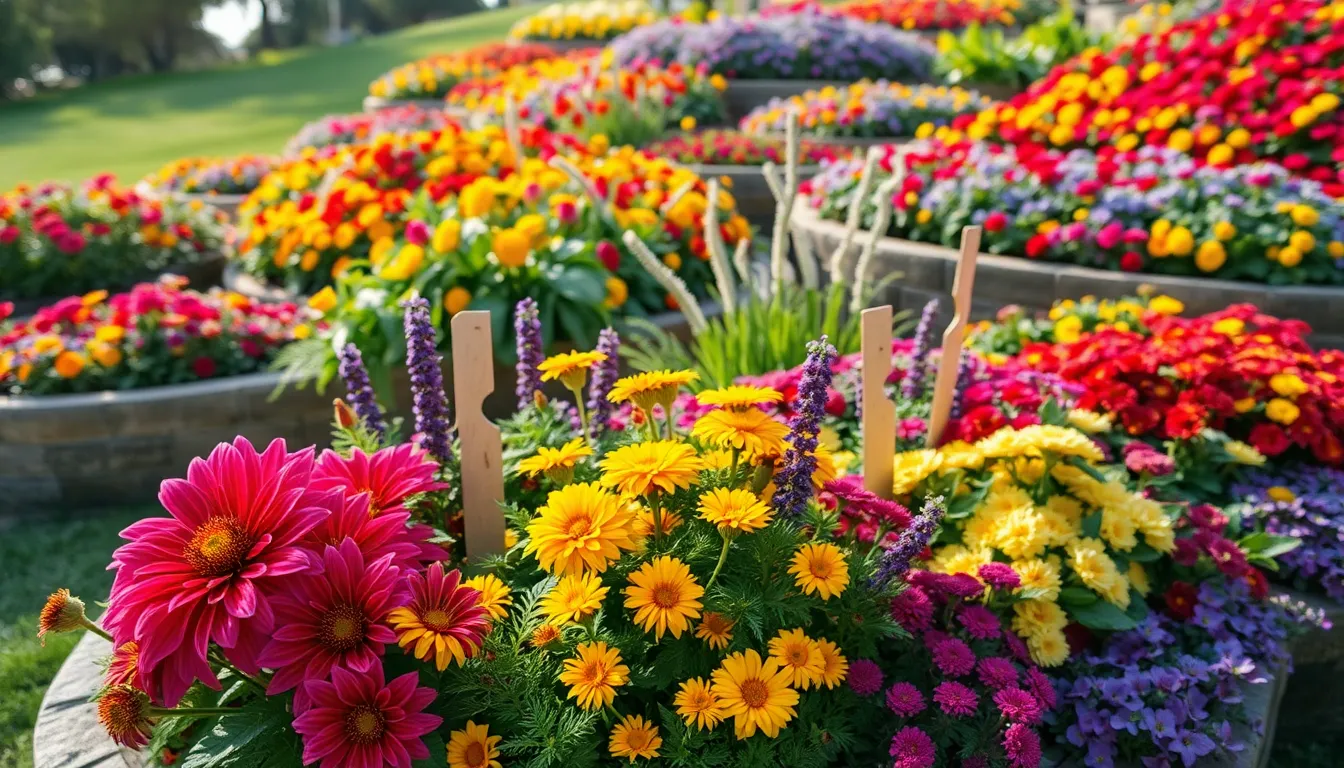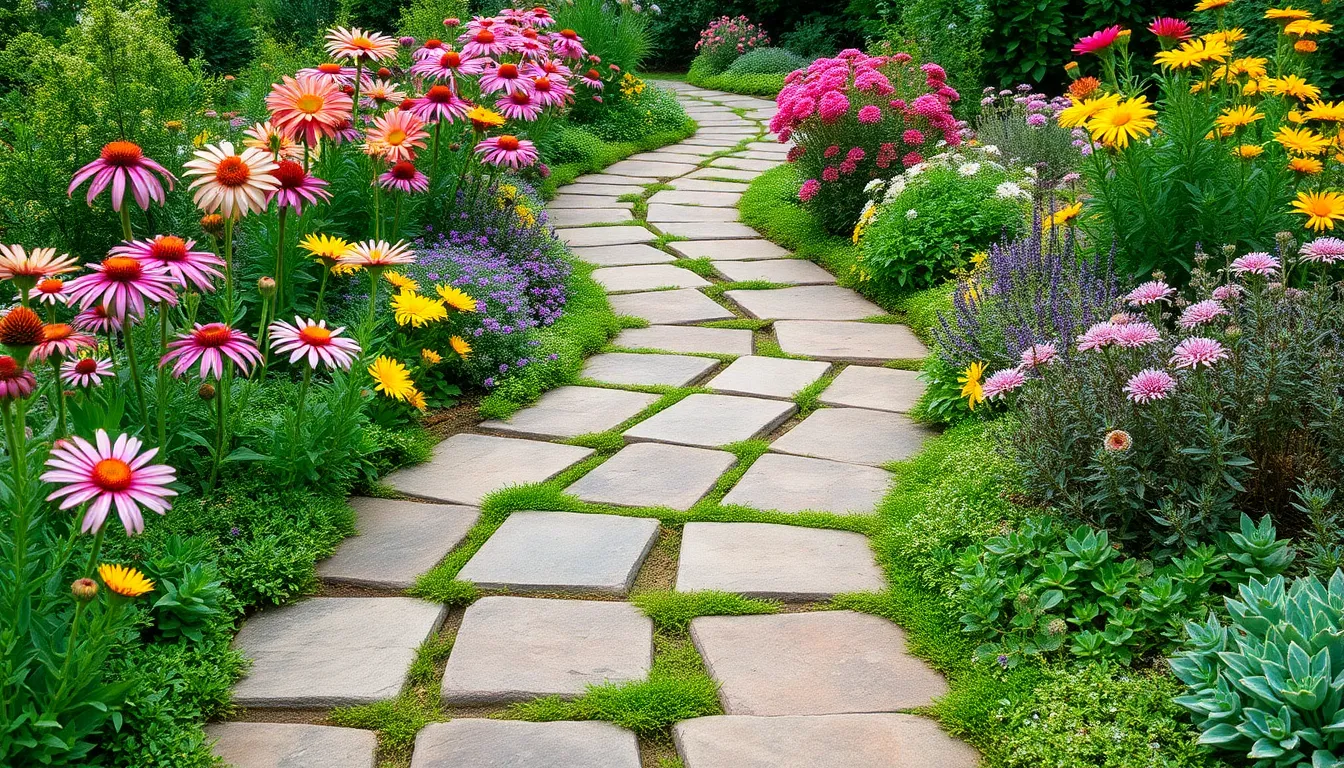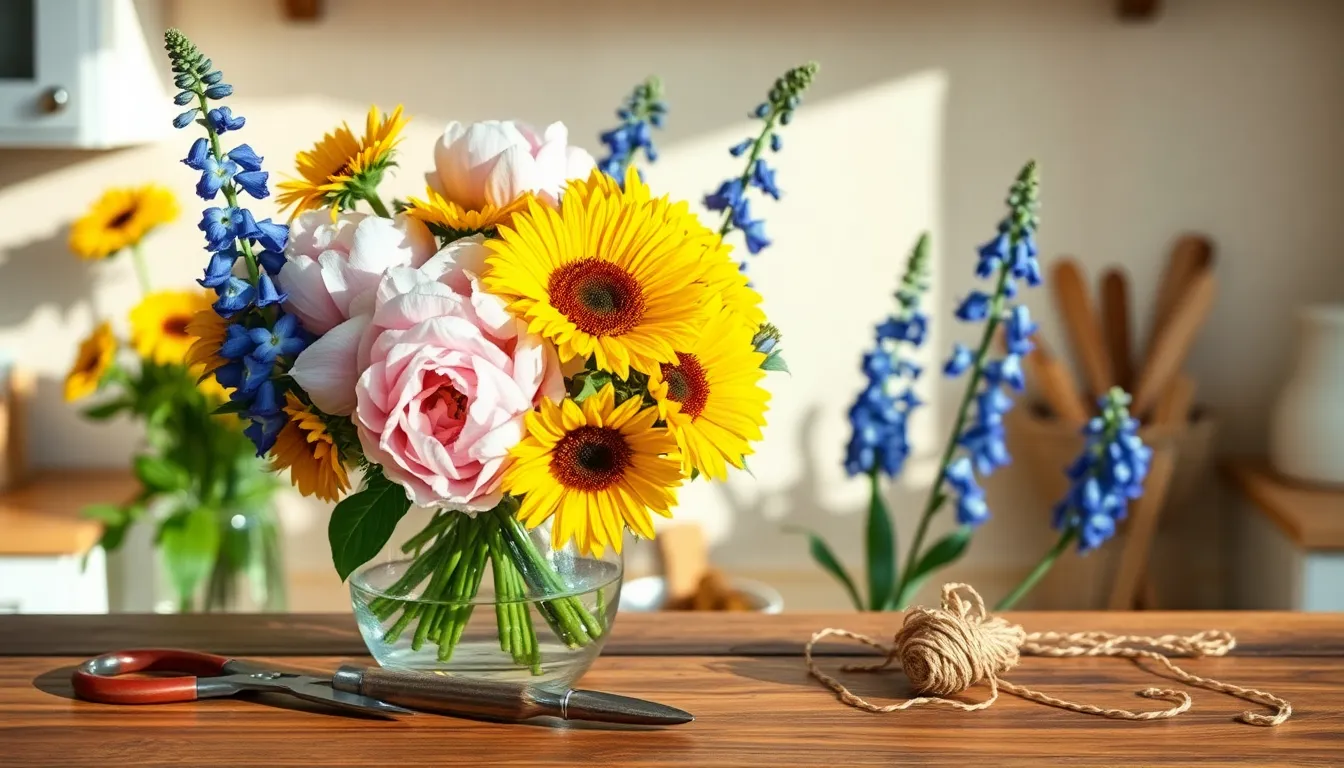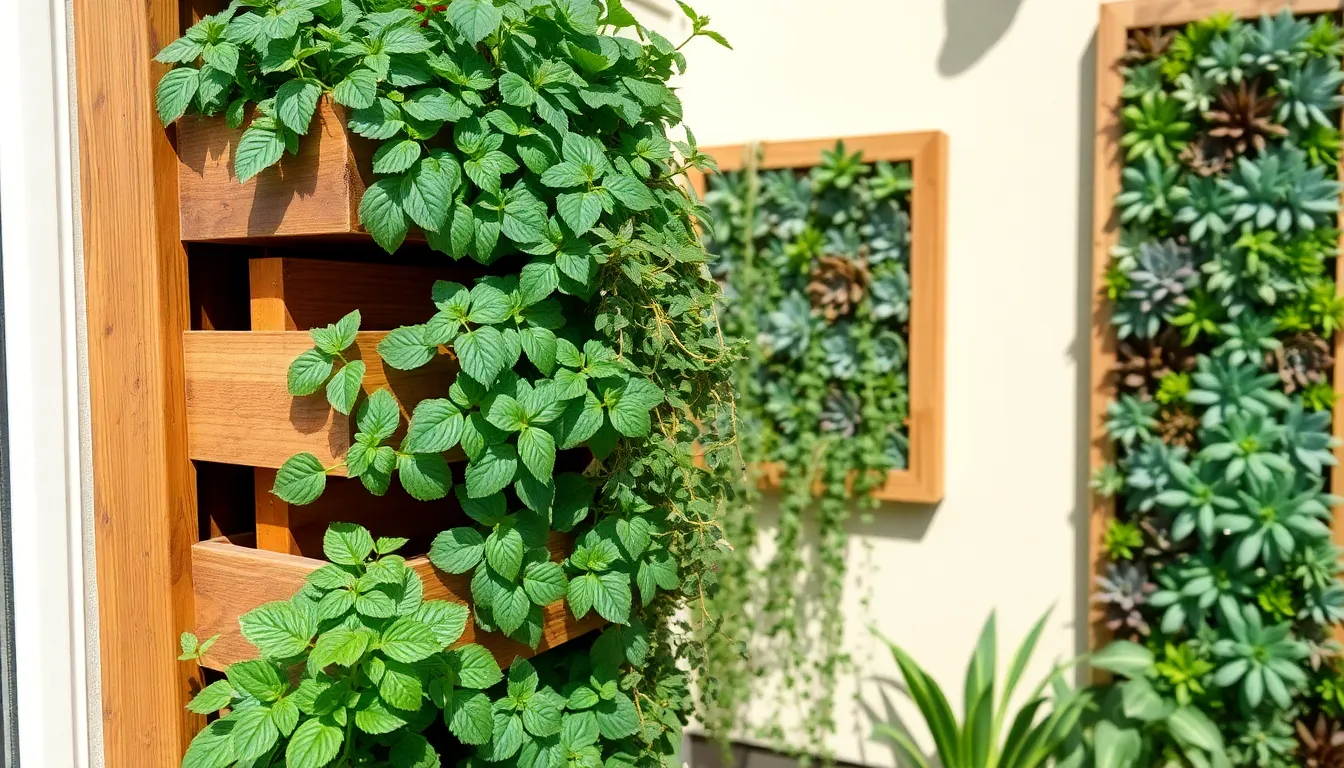Imagine stepping into your very own vibrant oasis, where every bloom dances in the sunlight, and the air is filled with the sweet scent of nature’s finest artistry. Whether you’re just starting with your first trowel or you’re a seasoned green thumb, “Beautiful Flower Garden Layout Ideas” is your gateway to cultivating a stunning floral haven that will make every day feel like a stroll through paradise.
In this guide, you’ll discover a treasure trove of design ideas that are as practical as they are beautiful, tailored to inspire and empower gardeners of all levels. From creating harmonious color palettes to maximizing small spaces with lush arrangements, you’ll find the tools to transform your garden dreams into reality. With each layout, you’ll not only enhance your garden’s aesthetic appeal, but you’ll also gain the satisfaction of nurturing life and witnessing your plants thrive under your care. So, dig in and let your creativity blossom—your garden masterpiece awaits!
Choose Colorful Seasonal Blooms
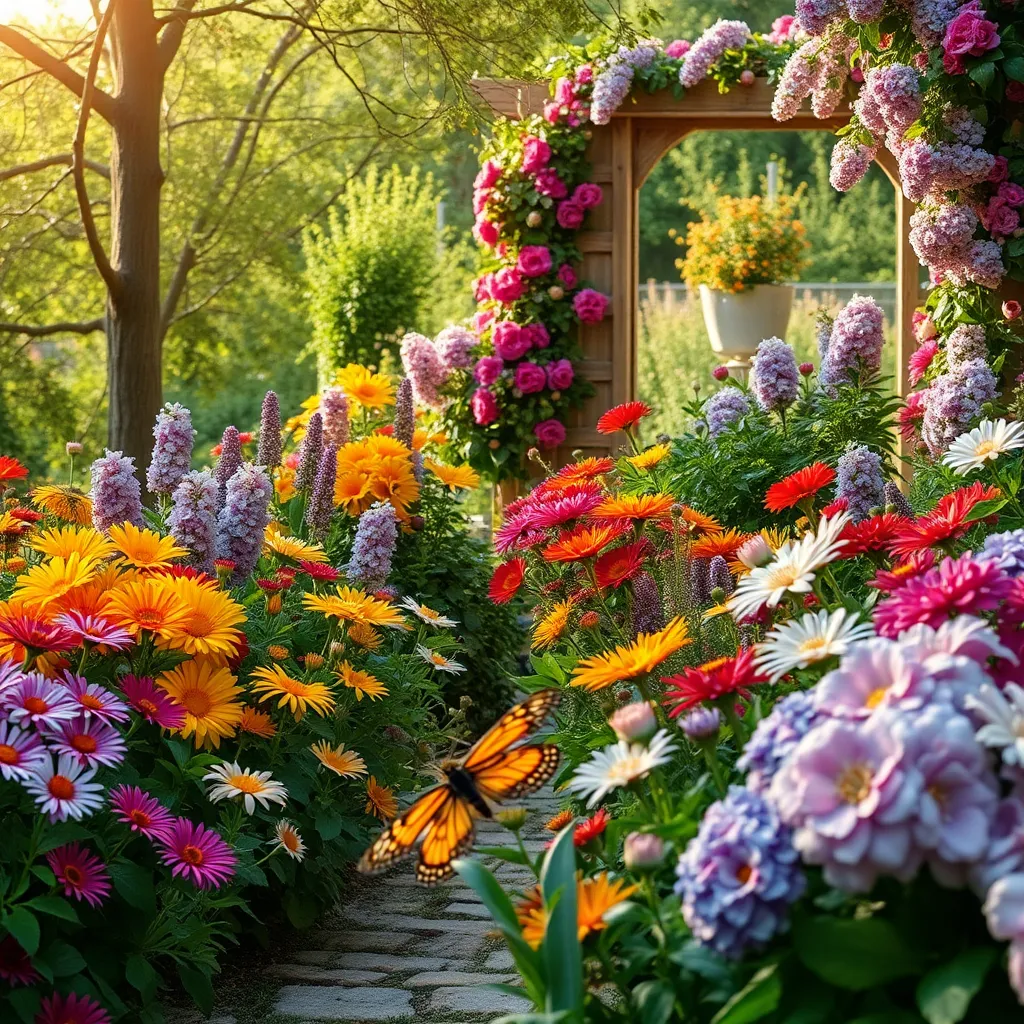
To create a vibrant garden with colorful seasonal blooms, start by selecting flowers that thrive in your local climate. Consider planting a mix of annuals and perennials to enjoy a continuous display of color throughout the seasons.
For beginners, easy-to-grow options like marigolds and zinnias offer bright hues and are hardy in various conditions. Ensure they are planted in well-draining soil and receive at least six hours of sunlight daily for optimal growth.
Advanced gardeners might add dahlias or ranunculus for a more sophisticated touch. These plants require rich, organic soil and consistent watering, but reward you with stunning, long-lasting blooms.
To maintain a healthy garden, regular deadheading of spent flowers encourages new growth and prolongs the blooming period. Additionally, applying a balanced fertilizer every 4 to 6 weeks can boost plant vigor and flower production.
Design with Curved Pathways
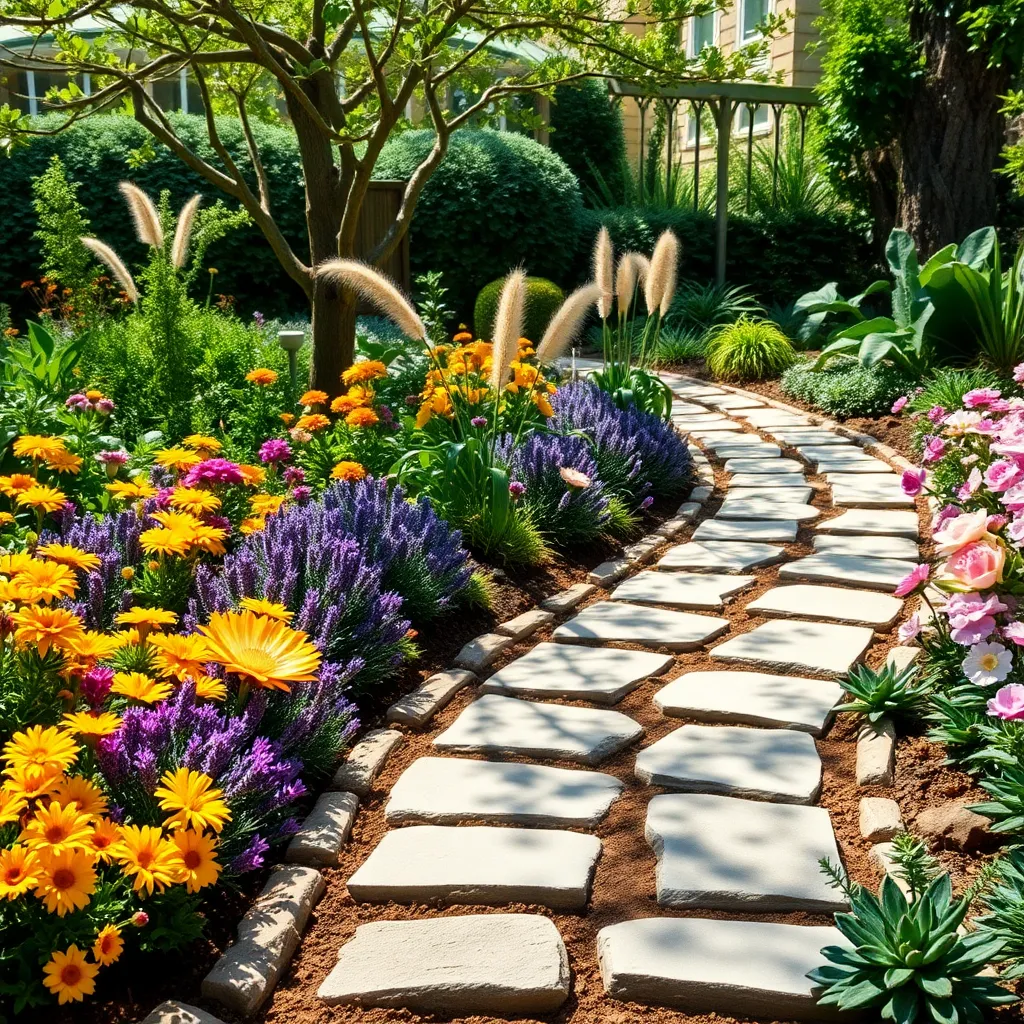
Curved pathways add a touch of elegance and natural beauty to any flower garden layout. They can create a sense of mystery and exploration, encouraging visitors to wander and discover new plantings at every turn.
Designing with curves is not just about aesthetics; it can also be practical. Curved paths can help guide water runoff effectively, reducing erosion and keeping your garden beds intact.
When planning your curved pathways, consider using materials that complement your garden’s style, such as gravel, brick, or stepping stones. Gravel is a cost-effective option that provides excellent drainage, while bricks offer a more formal appearance.
To enhance the look of your pathways, plant low-growing flowers or ground covers along the edges. Plants like creeping thyme or sedum can soften the path’s borders and add a pop of color without overwhelming the space.
Incorporate Vertical Plant Structures
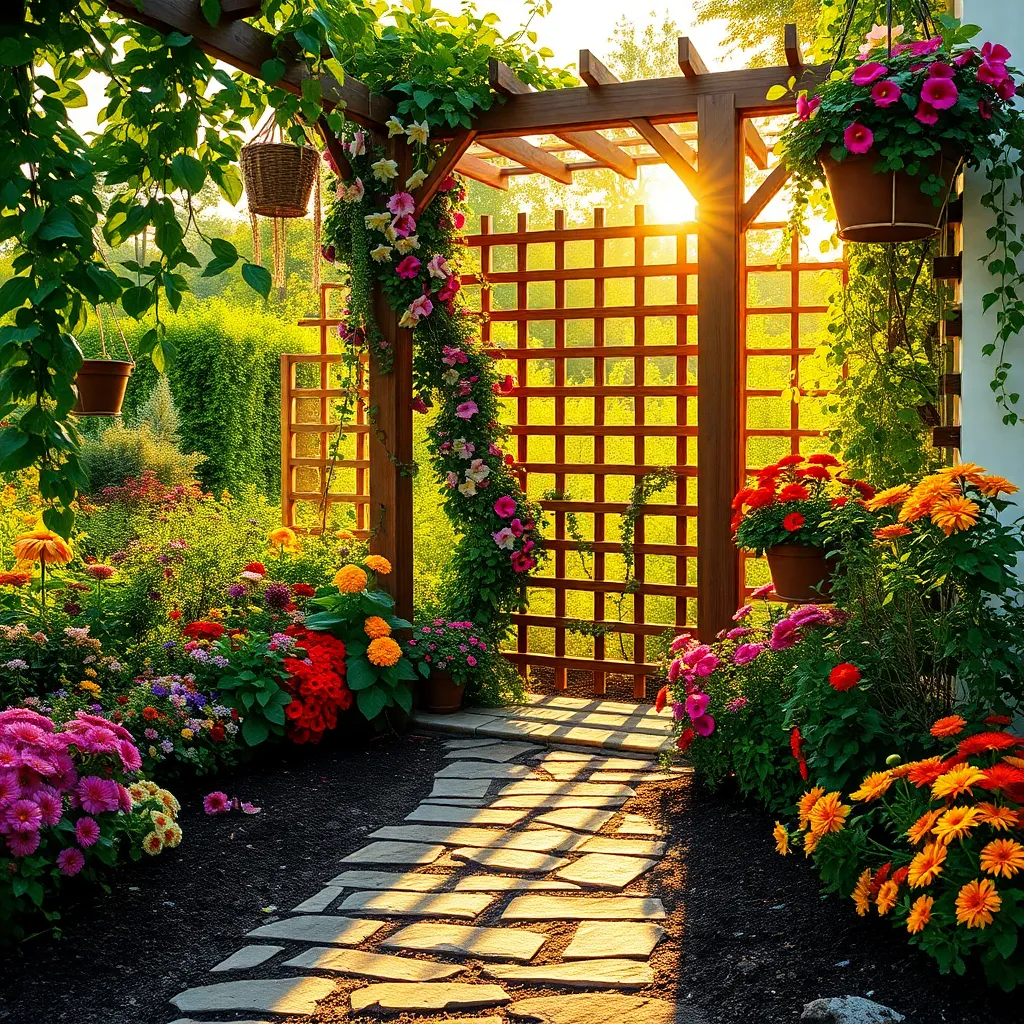
Vertical plant structures can transform your garden by adding height and visual interest. They are perfect for small spaces where you want to maximize planting areas without expanding your garden footprint.
Using structures like trellises, arbors, or obelisks allows you to grow climbing plants such as clematis, sweet peas, or even climbing roses. Clematis thrives in well-drained, fertile soil and requires support to climb, while sweet peas need regular watering to produce their fragrant blooms.
For a more advanced option, consider creating a living wall with a variety of plants. This technique involves using a vertical support system and growing a mix of foliage and flowering plants, such as ferns and begonias, which prefer partial shade and consistently moist soil.
When planning your vertical garden, ensure that the structures are sturdy enough to support mature plants. Securely anchoring trellises in the ground will prevent them from toppling over under the weight of your flourishing greenery.
Additionally, choose the right materials for your structures to ensure longevity and aesthetic appeal. Wooden trellises treated for outdoor use are a popular choice, but metal or recycled materials can also be effective, offering durability and a unique look.
Balance Heights for Visual Interest
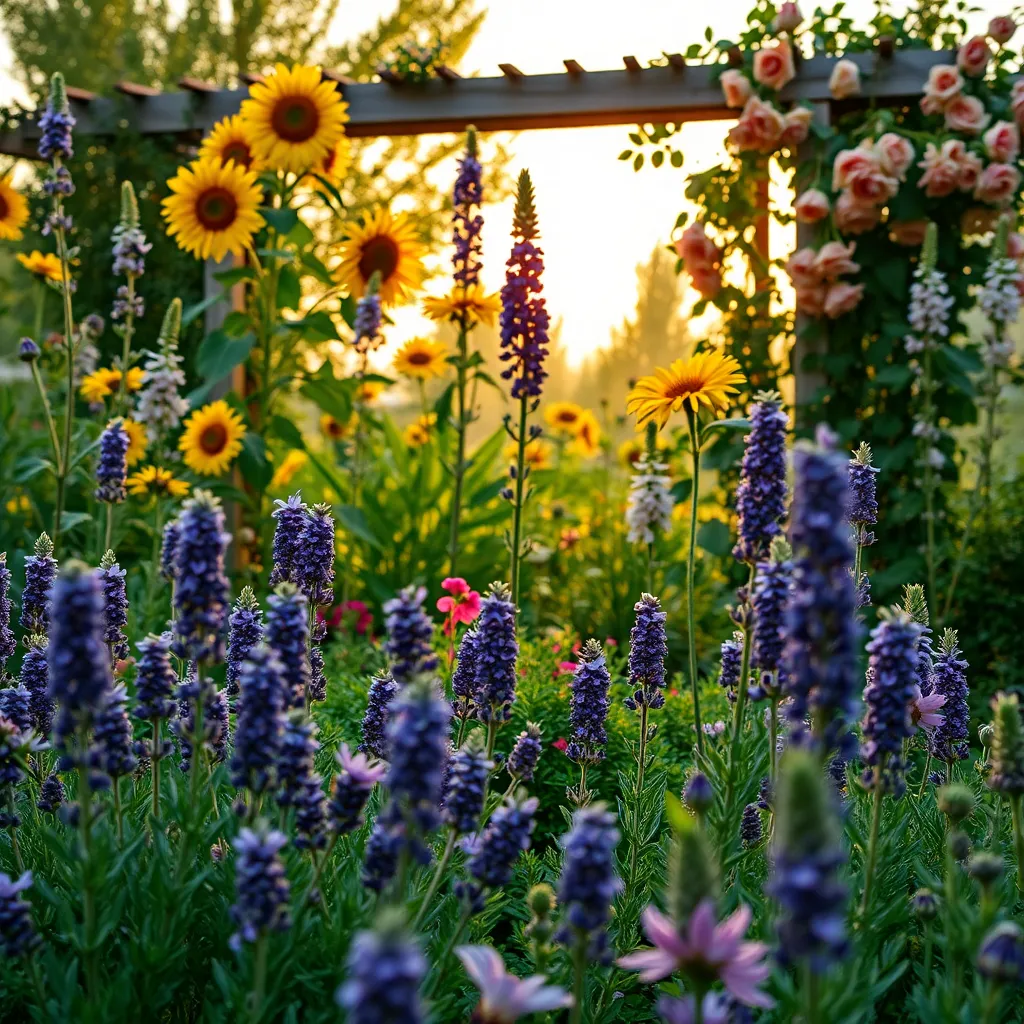
Balancing the heights of plants in your garden is a simple yet effective way to create visual interest. Start by selecting plants of varying heights to ensure a dynamic look, such as mixing low-growing ground covers with taller perennials or shrubs.
For beginners, consider using a tiered approach where the tallest plants are placed at the back of a border or in the center of a circular bed. This technique not only enhances the visual appeal but also ensures that shorter plants receive adequate sunlight.
Advanced gardeners might experiment with using a mix of annuals and perennials to maintain a balance throughout the seasons. Choose plants with different blooming times to keep your garden vibrant and engaging from spring through fall.
To achieve a harmonious blend, pay attention to the mature height of plants and plan accordingly. Using companion planting techniques can also help in maintaining balance; pair taller plants like sunflowers with medium-height options like dahlias to create a lush, layered effect.
Create Focal Points with Statues
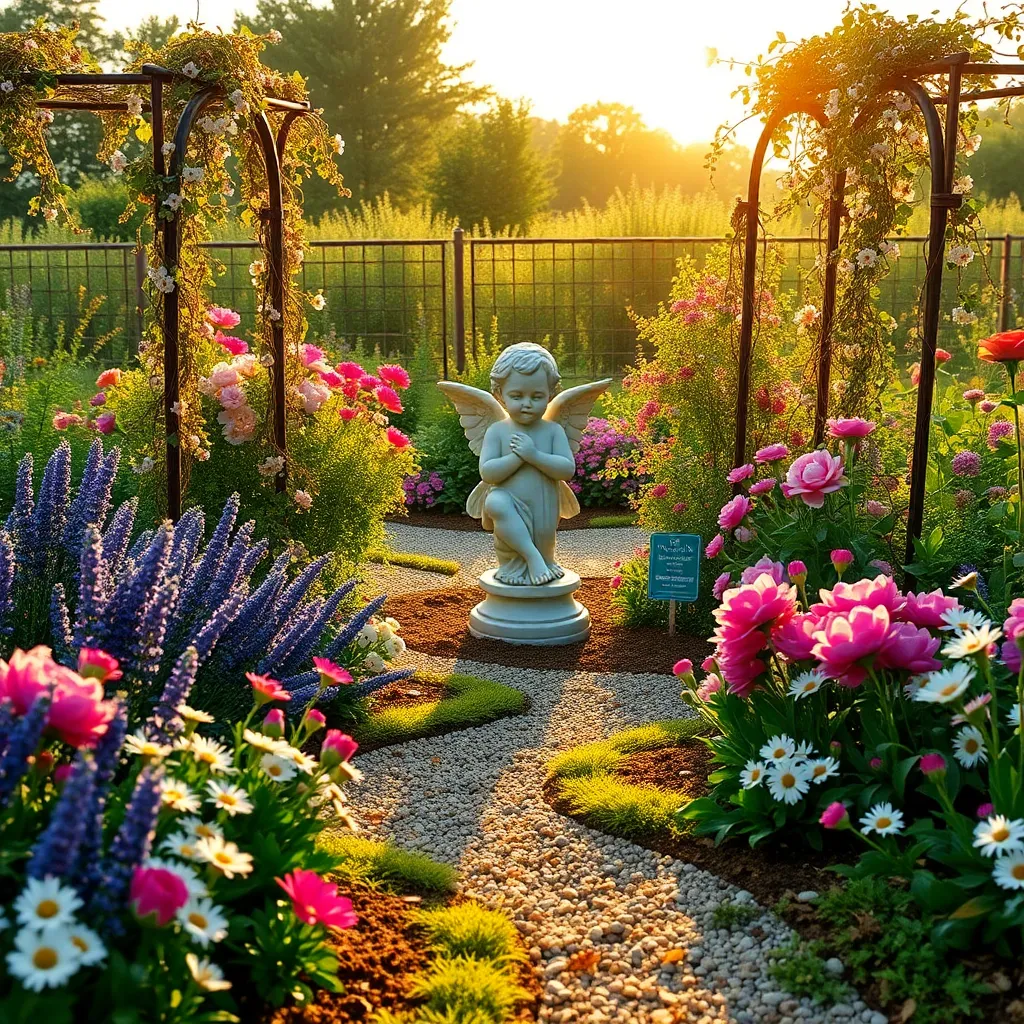
Incorporating statues into your garden can serve as stunning focal points that draw the eye and complement your plants. To create a harmonious visual balance, consider selecting statues that match the style and scale of your garden—whether it be classical, modern, or whimsical.
Position statues where they can be appreciated from different angles, such as near a garden path or at the end of a line of sight. This approach ensures they become an integral part of the garden’s design rather than an afterthought.
Surround your statues with plants that enhance their presence, such as low-growing ground covers or taller grasses. These plants help blend the statue into the landscape while adding layers of texture and color.
For a dramatic effect, consider using lighting to highlight the statue during evening hours. Solar lights or strategically placed spotlights can create beautiful shadows and enhance the garden’s atmosphere at night.
Conclusion: Growing Success with These Plants
As we explored in “Beautiful Flower Garden Layout Ideas,” nurturing a relationship is much like tending to a garden. First, we emphasized the importance of foundational trust—the soil from which everything grows. Next, we discussed effective communication, akin to the sunlight that allows your relationship to flourish. We then delved into the necessity of shared goals, serving as the guiding trellis for your mutual journey. Fourth, we highlighted the impact of quality time, the water that sustains and revitalizes your bond. Finally, we touched on the beauty of individual growth within a relationship, like diverse blooms adding unique vibrancy to your shared space.
As a next step, take a moment today to discuss a shared goal with your partner, planting the seed for future growth. Remember, tending to your relationship garden requires continuous effort and attention.
Don’t let these insights fade away—bookmark this article now to revisit these essential concepts whenever you need guidance. As you cultivate these practices, envision a future brimming with relationship success, where both partners thrive individually and together. Embrace these strategies, and watch your relationship blossom into something truly beautiful and enduring.

